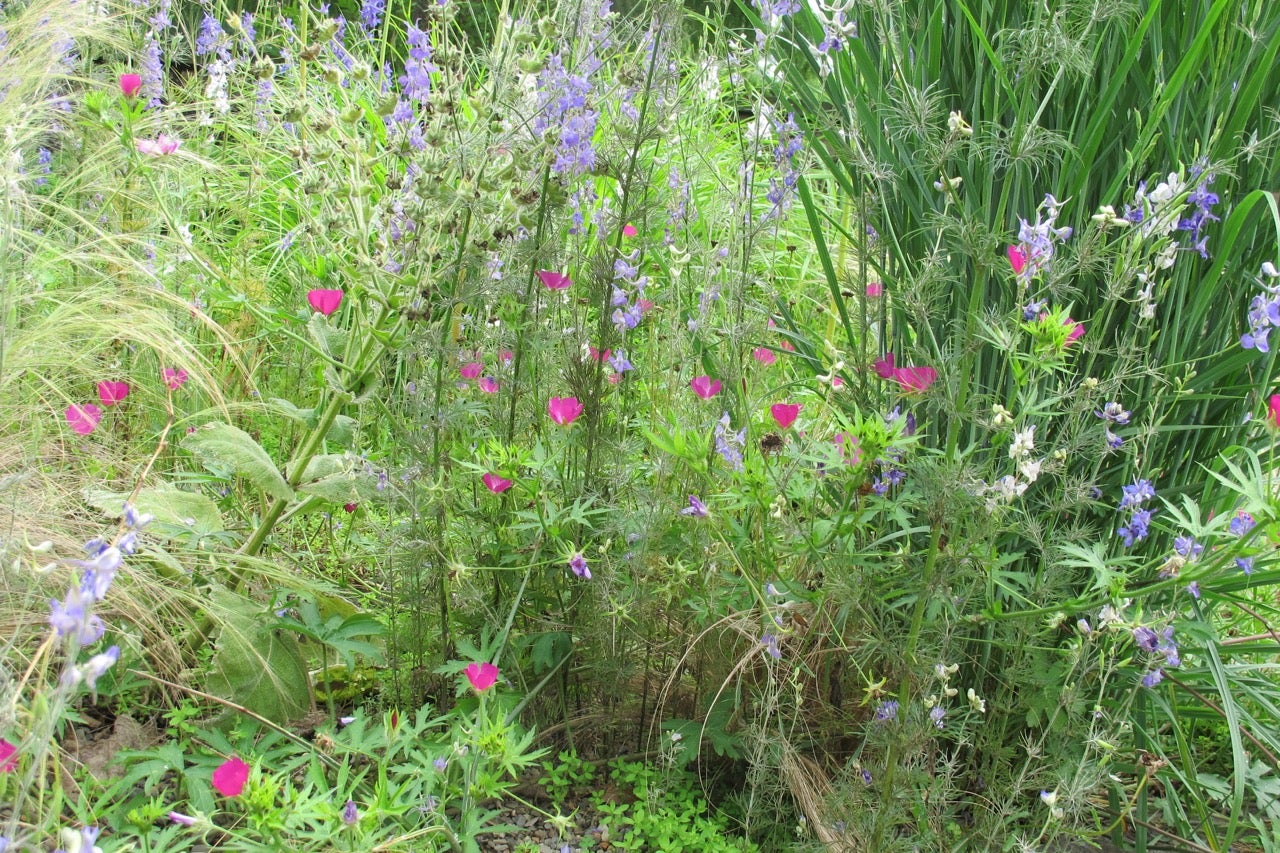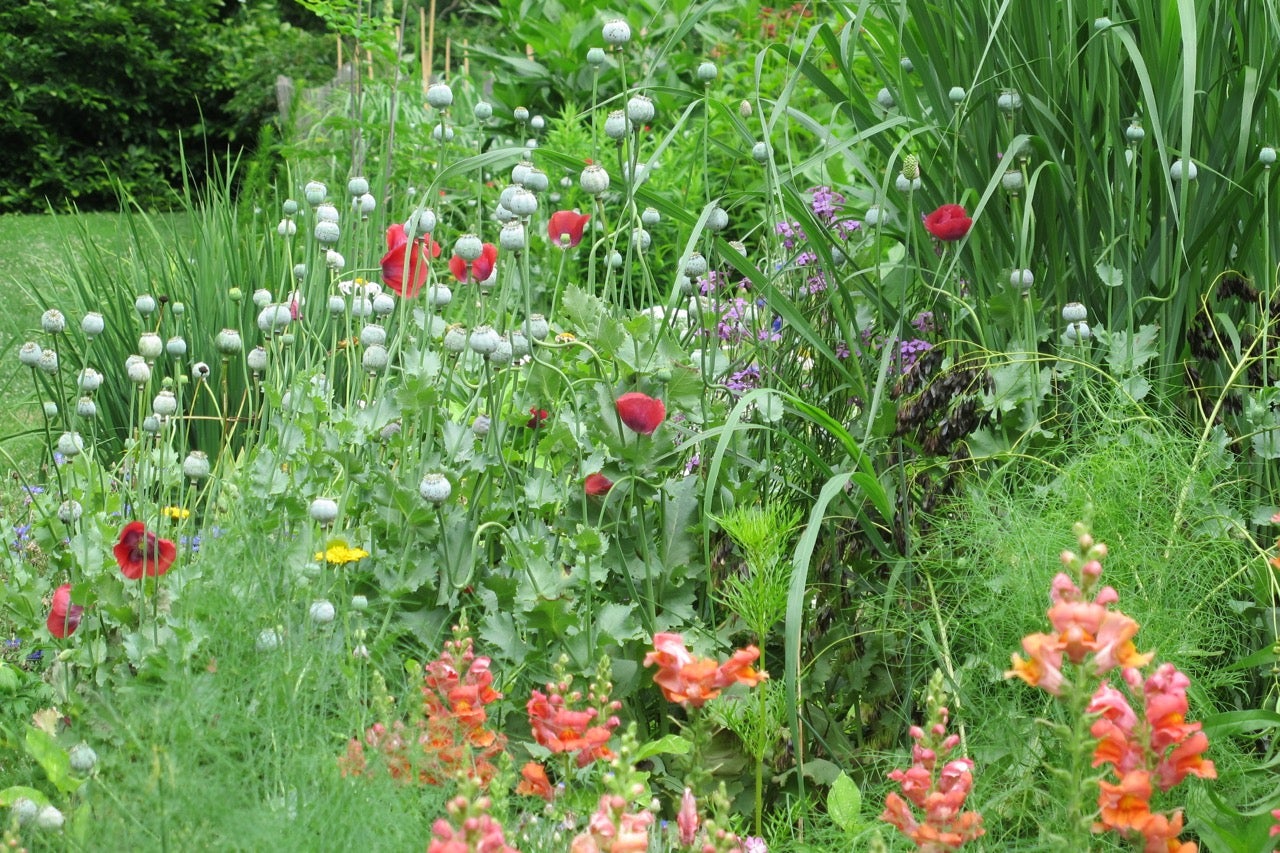Chill out in a Pleasure Garden that merits the highest praise

When you think about verdant public open space in Philadelphia, the 9,200 acre Fairmount Park system immediately springs to mind. Big, bold and beautiful it ranks right up near the top of great outdoor spaces in the world.
But did you know that our region also can lay claim to a lush place that is as inspiring as Bodnant, Sissinghurst or Hidecote?
Yep, a mere half hour by car from Philly, the pleasure garden Chanticleer sits on 45 acres in Radnor Township, 10 degrees cooler than City Line Avenue and a mere stone’s throw away from Ardrosson, Hope Montgomery Scott’s ancestral Main Line home. But that is another Philadelphia Story.
Chanticleer, created out of the estate of chemical magnate Adolph Rosengarten, is solely purposed for the enjoyment and education of the public. The garden opened to the public in 1993. There are more than 5,000 plants (click here for the master inventory). Picnickers are welcome.
Right now the garden is ablaze in hues.
The flower of Aechmea chantinii ‘Surprise’ beckons in a container on the Chanticleer Terraces. Orange Asclepias tuberosa, purple larkspur and magenta-pink Callirhoe involucrata can be seen through the Gravel Garden. Clematis ‘Polish Spirit’ and Clematis x durandii climb through Schizophragma integrifolium are also on the Chanticleer Terraces. Anigozanthos ‘Big Roo Red’, or red Kangaroo paws, in combination with a bromeliad and Elephant ears populate the Chanticleer Overlook. Salpiglossis ‘Royal Red Bicolor’ is blooming in the Entrance Circle. And get this, Artichoke fruit is forming nicely in the Serpentine.
The Tennis Court, Ruin, Gravel Garden, and Pond Garden focus on hardy perennials, both woody and herbaceous. The Tennis Court builds on the idea of foliar display introduced in the Teacup. The Ruin is a folly, built on the foundation of Adolph Rosengarten, Jr.’s home. It is meant to look as if the house fell into disrepair. The Gravel Garden is hot and dry, a touch of the Mediterranean in Pennsylvania. The Pond area is exuberantly floriferous.
Asian Woods and Bell’s Woodland are shady areas. The former features natives of China, Korea, and Japan; the latter, plants of eastern North America. The Serpentine celebrates the beauty of agricultural crops. The cut flower and vegetable gardens produce flowers for our arrangements and food for our tables. Surplus goes to a shelter. The parking lot is our “low maintenance” area, with hardy plants that are neither irrigated nor fertilized. Staff build furniture, fences, gates, bridges, and drinking fountains during the winter in converted garages.
A nine member Board of Directors, six of whom are Rosengarten relatives, oversees The Chanticleer Foundation. The garden opened to the public in 1993. There are 20 full-time staff, of whom two manage facilities and 14 are gardeners and groundskeepers.
If you go:
Chanticleer is open to the public Wednesday through Sunday from 10 am until 5pm. Chanticleer is open 10:00 a.m. to 5:00 p.m. Wednesday through Sunday. The garden is also open on Friday evenings until 8:00 p.m. from May through Labor Day. The 2015 season begins on April 1st and ends on November 1st. Price of Admission: Adults (13 years and over) – $10.00; Pre-teen children (12 years and under) – Free; Members of Pennsylvania Horticultural Society and local arboreta – $8.00; Radnor Library Cardholders – $5.00; Garden professionals – Free
WHYY is your source for fact-based, in-depth journalism and information. As a nonprofit organization, we rely on financial support from readers like you. Please give today.

















